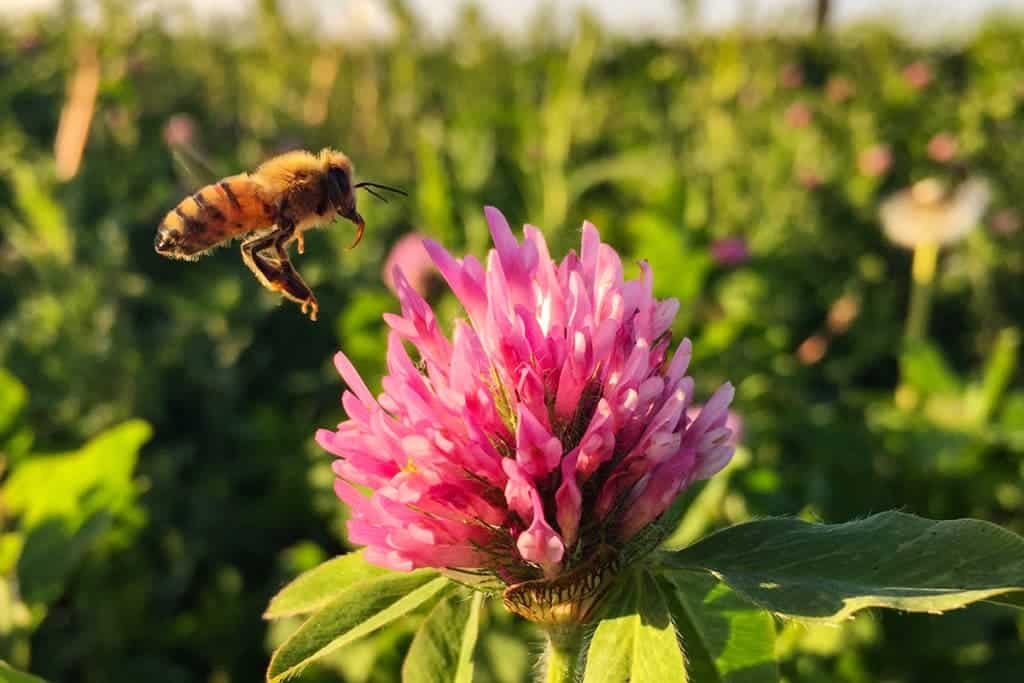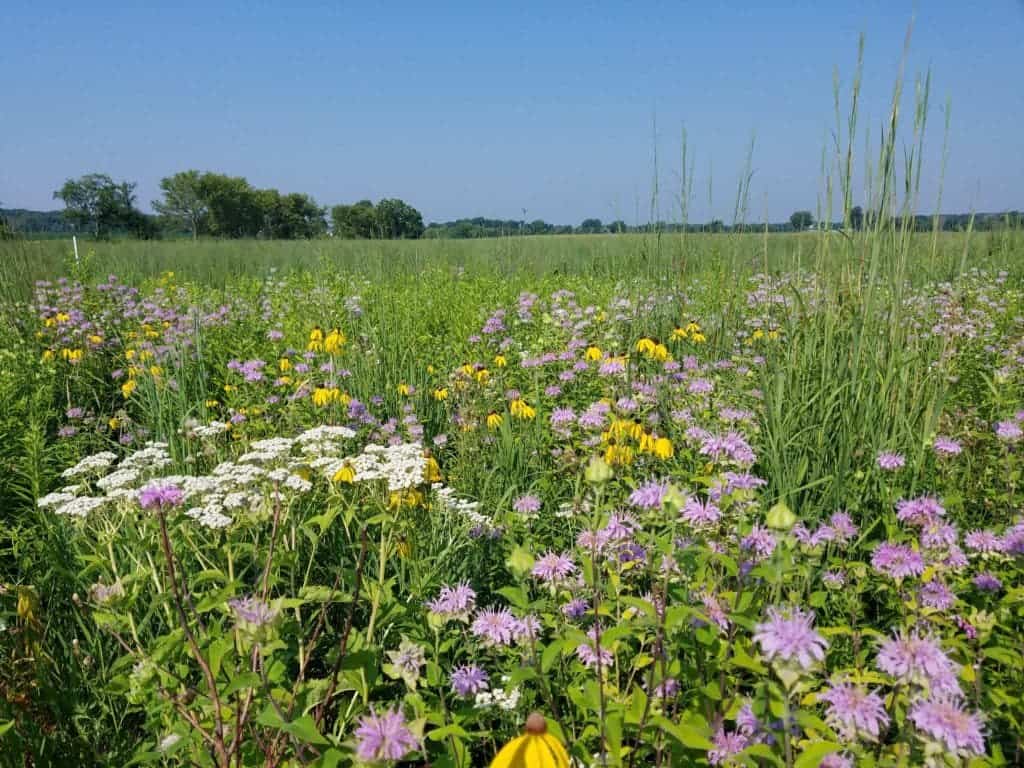
When scientists placed honey bee hives next to soybean fields in Iowa, they were prepared to track how the bees would fare over the season. Surprisingly, the bees seemed to do really well at first. They gained weight, built up honey stores, and thrived. But things quickly turned south in August. By October, the bees had consumed almost their entire stock, and were malnourished.
The reason was simple: they were out of food sources.
“We saw a feast-or-famine kind of dynamic happening, where in the middle of the summer they were doing great. In fact, the hives in highly agricultural areas outcompeted hives in areas with less soybean production,” said Amy Toth, a professor of ecology, evolution and organismal biology at Iowa State University who led the research with ISU entomology professor Matthew O’Neal and University of Illinois entomology professor Adam Dolezal.
“But then they all just crashed and burned at the end of the year,” Toth said.
The researchers tried different approaches to see if they could save the bees. They were somewhat successful when they moved the bee colony to a reconstructed prairie site with many late-flowering plants. This helped the hives rebound and make sufficient stocks for the winter.
This study is particularly important as it offers a nuanced view of how bees tend to do around agricultural areas. Some previous studies have found that honeybees do better in agricultural areas than in other landscapes, but this is still far from settled. What Toth and colleagues show is that bee evolution is not linear — even if they thrive in the summer, yearly can still be devastating.
“There’s been a lot of interest in how bees respond to agriculture,” said co-author Adam Dolezal. “There’s been work on pesticides and predictions that the highly monocultured agricultural landscapes have lost a lot of floral resources.”
“One hypothesis about that is that bees near agricultural zones have more access to flowering crops and weeds like clover than those near forests, which can have fewer floral resources,” he said.

The new research seems to support this idea — but yet again, things aren’t clear. The researchers tracked to see which plants the bees rely on, so they took samples of pollen spilled by foraging bees. Surprisingly, over 60% of the pollen came from clover — not the agricultural soy plants. Field edges are often mowed and contain clover, which seems to be very important for the bees — but is often neglected by the farmers.
But here’s the thing) clover (as soybean, and many other agricultural plants) tend to bloom in late July or early August. This means that in late August, the bees’ food supply starts dwindling. If we want to help bees make it past the hump, providing them access to a small prairie (particularly consisting of late-blooming flowers) can make a huge difference. However, researchers don’t recommend that beekeepers move their hives around.
That’s difficult, time-consuming, and in many environments, there are few prairies which can support the bees. Instead, the team recommends adding small patches of around 5-8 acres (2-3 hectares) around large agricultural fields.
These strips will not only help the bees, but they would also reduce soil erosion and prevent unwanted nutrient run-off from farm fields into waterways. They would also help other insects and critters, helping to mitigate some of the invariable ecosystem damage brought by agriculture. These prairies would essentially serve as an oasis for life in what is often an agricultural desert.
The study “Native habitat mitigates feast/famine conditions faced by honey bees in an agricultural landscape” has been published in the Proceedings of the National Academy of Sciences.


